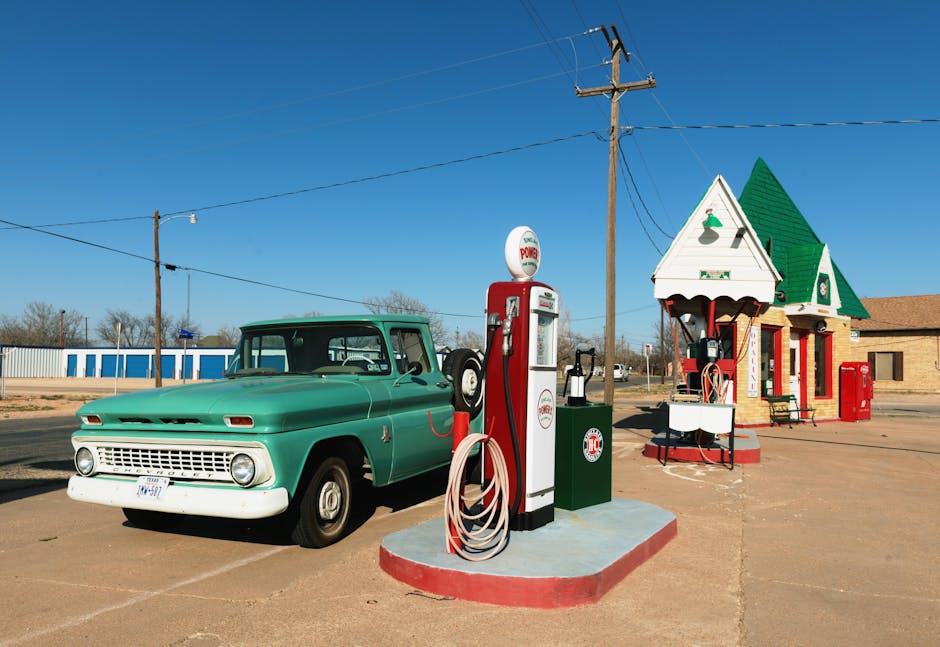 Swipe for more categories
Swipe for more categories 
What Cars Use Flex Fuel
Warning: Undefined variable $post_id in /var/www/dsw/wp-content/themes/DriveSmart_2024_v1.1/single.php on line 27
January 2, 2024
Warning: Undefined variable $post_id in /var/www/dsw/wp-content/themes/DriveSmart_2024_v1.1/single.php on line 75
What Cars Use Flex Fuel
Warning: Undefined variable $post_id in /var/www/dsw/wp-content/themes/DriveSmart_2024_v1.1/single.php on line 76
January 2, 2024
In a world where conservation and sustainability are becoming more important, flex fuel emerges as a top player in the automotive industry. But what exactly is flex fuel and what cars can use it?
Flex fuel, also known as E85, is a blend of 85% ethanol and 15% gasoline, offering an eco-friendly alternative to traditional fuel. This type of fuel is gaining traction for its lower emissions and cost-efficiency, making it an attractive option for many eco-conscious drivers.
However, not all vehicles are compatible with this type of fuel. Stick around as we dig into the details of what cars use flex fuel, the benefits it brings, and why it might be the right choice for your driving needs. Continue reading to explore the fascinating realm of flex fuel vehicles.
History and Development of Flex Fuel…

Photo by Pixabay on Pexels
Photo by Connor Forsyth on Pexels
Photo by Apti Newim on Pexels
The evolution of flex fuel can be traced back to the 1980s when the push for alternative fuels became significant due to the oil crisis. The creation of flex fuel vehicles was accompanied by the development of E85, a blend of 85% ethanol and 15% gasoline. It was in Brazil, one of the world’s largest ethanol producers, where flex fuel technology found early acceptance.
American manufacturers later introduced this technology in the late 1990s, with Ford’s Taurus model pioneering the initiative. Interestingly, despite the technology existing for decades, it is only in recent years that it has gained traction with consumers, due to increasing environmental concerns. Consequently, we now see a growing number of automobile manufacturers integrating flex fuel technology into their latest models.
How Flex Fuel Works in Vehicles…
Flex fuel, also known as E85, is a blend of conventional gasoline and ethanol, a biofuel derived from plants such as corn or sugarcane. In vehicles, Flex fuel works just like regular gasoline, with one key difference.
The vehicle’s engine control unit (ECU) monitors the blend of ethanol to gasoline. If the blend has a higher concentration of ethanol, the engine injects more fuel. Conversely, if the blend has less ethanol and more gasoline, the engine injects less fuel.
This automatic adjustment ensures that the engine gets the correct air-to-fuel mixture for complete combustion, optimizing both performance and emissions. It’s important to note; operating a flex-fuel vehicle or FFV requires no driver input; it automatically adjusts to any fuel blend.
However, not all vehicles are capable of utilizing E85. A FFV is specifically designed to handle the corrosive nature of ethanol and the different air-fuel ratios.
Environmental Impacts of Using Flex Fuel…

The environmental impacts of using flex fuel are noteworthy. By using flex fuel, harmful greenhouse gas emissions are significantly reduced in comparison to traditional gasoline. Ethanol, a key component of flex fuel, is produced from plants such as corn and sugar cane, both renewable resources.
However, one cannot overlook the potential negative environmental impacts related to the growth and production processes of these crops. Extensive farming can often lead to soil erosion, deforestation, and water pollution due to the use of pesticides and fertilizers.
Moreover, farming practices also contribute to carbon dioxide emissions, which are a primary contributor to global warming. These considerations highlight the need for comprehensive strategies towards sustainable crop production, to truly tap into the environmental benefits of flex fuel. Interestingly, technological advancements are rolling out to address these issues, signaling a promising future for flex fuels.
Economic Considerations and Costs Associated with Flex Fuel…

Photo by Miguel Á. Padriñán on Pexels
Photo by pipop kunachon on Pexels
An essential factor to consider when debating the use of flex-fuel in cars is the economic implications. While flex fuel’s per gallon cost traditionally can be lower than that of regular gasoline, it’s crucial to note that its energy content is also less. Thus, lower fuel efficiency is often observed, and more trips to the gas station might be necessary, ultimately adding to the costs.
Additionally, flex-fuel vehicles are more expensive to purchase initially than their regular counterparts due to their complex engine system. However, these costs can often be offset through various federal and state incentives designed to promote the use of cleaner energy sources.
Lastly, fluctuations in oil prices can also impact the economic feasibility of using flex fuel. One must keep these varying costs in mind when making an informed decision about flex-fuel cars.
List of Common Cars that Use Flex Fuel…

Understanding what cars use flex fuel can be useful both for environmental and economic reasons. Popular models you may be familiar with include:
1) Ford’s F-150 and Taurus employ flex fuel capabilities offering drivers the option to switch from gasoline to ethanol when needed.
2) Chevrolet’s Silverado 1500, Impala, and Tahoe models also come with flex-fuel compatibility.
3) Chrysler’s Town and Country are commonly seen flex-fuel vehicles on the road.
4) Nissan Titan and Armada are other great options for flex fuel usage.
5) Dodge Ram 1500 and Jeep Grand Cherokee are remarkable as these models are built to accommodate an ethanol blend.
Remember that not all versions of the vehicles listed are flex fuel compatible – be sure to confirm when considering your next purchase.
The Pros and Cons of Flex Fuel Vehicles…

Photo by Alexander Pöllinger on Pexels
Flex fuel vehicles present multiple pros. Primarily, they offer flexibility, allowing drivers to use either gasoline or ethanol-based fuels. This dual compatibility means you might never find yourself stuck without a fuel option. Besides, using ethanol as an alternative fuel can substantially reduce greenhouse gas emissions, contributing to environmental sustainability.
However, flex fuels come with downsides too. Ethanol-based fuels typically deliver less mileage than standard gasoline, lowering fuel efficiency. This might result in more frequent fill-ups, which could be inconvenient for those who drive long distances. Moreover, while flex fuels are becoming more widely available, they’re still not as widely distributed as standard gasoline, limiting accessibility in certain regions.
Balance these pros and cons considering your driving habits, location, and commitment to environmental sustainability before making a decision.
How to Find Out If Your Car is a Flex Fuel Vehicle…

Finding out whether your car is a flex fuel vehicle doesn’t have to be a daunting task. Often, it’s in the paperwork or on the car itself. Your vehicle’s manual typically identifies if your car is a flex fuel vehicle, so it’s always a good place to start.
But don’t stress if it isn’t mentioned or if the manual is missing. The vehicle might have it indicated externally as well, usually with a badge on the rear – the terms ‘Flex Fuel’ or ‘E85’ display this function. Alternatively, yellow gas caps are also an indicator.
If your vehicle doesn’t provide any visual cues, VIN checks or consults with professional mechanics can help set your uncertainty to rest. Always remember, knowledge is power, especially when it comes to your car.
Future Prospects of Flex Fuel in the Automobile Industry…

As we gaze into the future, the prospects for flex fuel in the auto industry appear extremely promising. Evolving trends tend to lean towards eco-friendly alternatives, with flex fuel leading the forefront of this transformative dialogue.
Enhanced technologies are amplifying the efficiency of flex fuel vehicles (FFVs), making them an attractive option for potential car owners. Moreover, an increase in government incentives for manufacturers to produce FFVs is a major driving force behind this steady shift towards the embrace of flex fuel.
Renewable and lower emissions stand as the key advantages of flex fuels, paving the way for a sustainable future. In this era of heightened environmental consciousness, one thing is certain – the role of flex fuel in the automobile industry is only set to grow larger with every passing year. Embrace the change, the future is flex fuel.
"> /var/www/dsw/wp-content/themes/DriveSmart_2024_v1.1/single.php on line 177
">
"> /var/www/dsw/wp-content/themes/DriveSmart_2024_v1.1/includes/quote-modal.php on line 8
">


